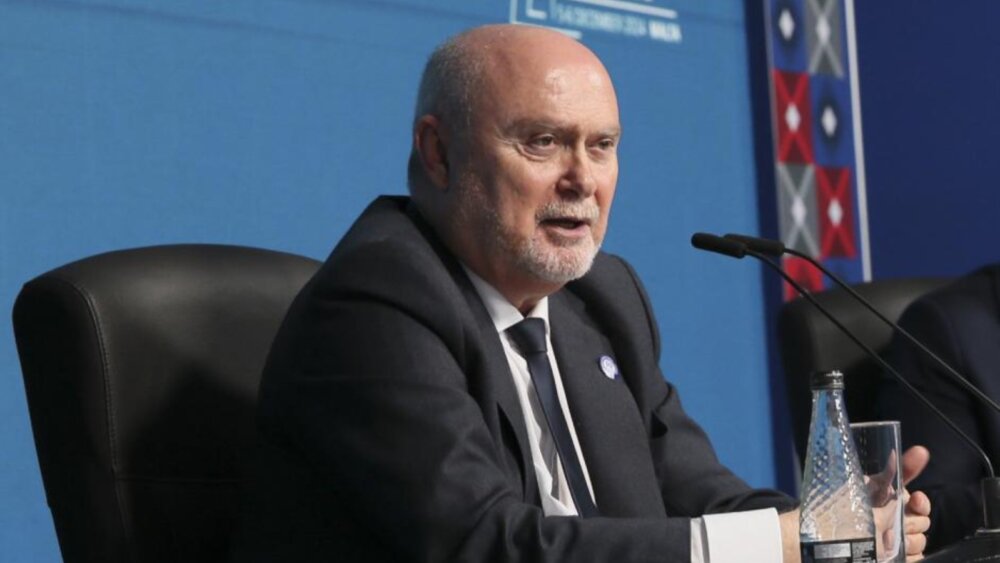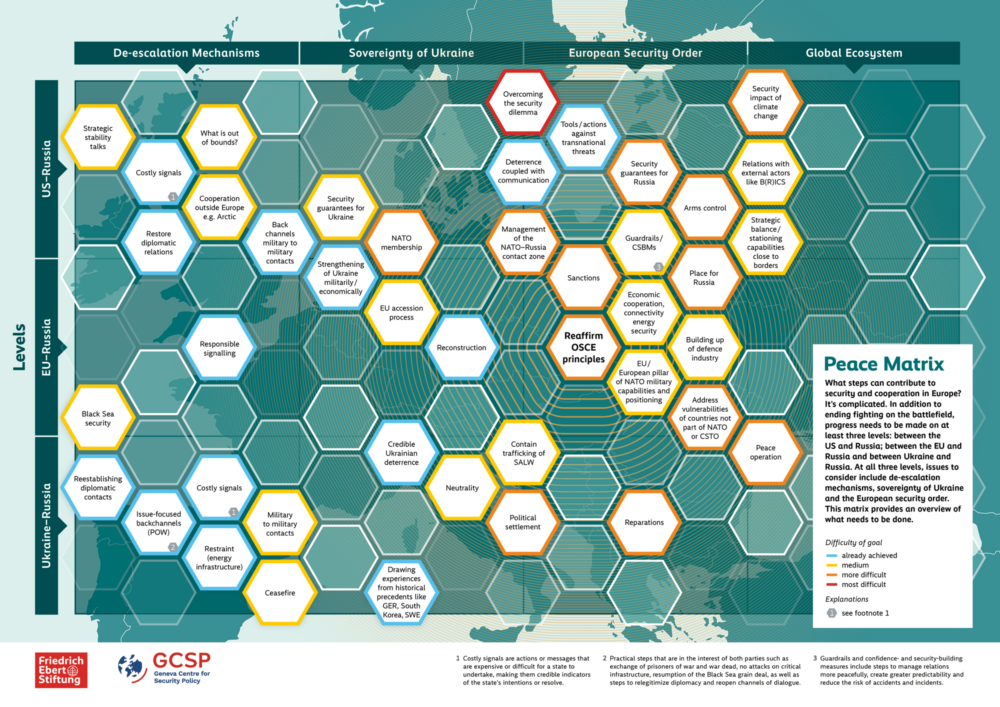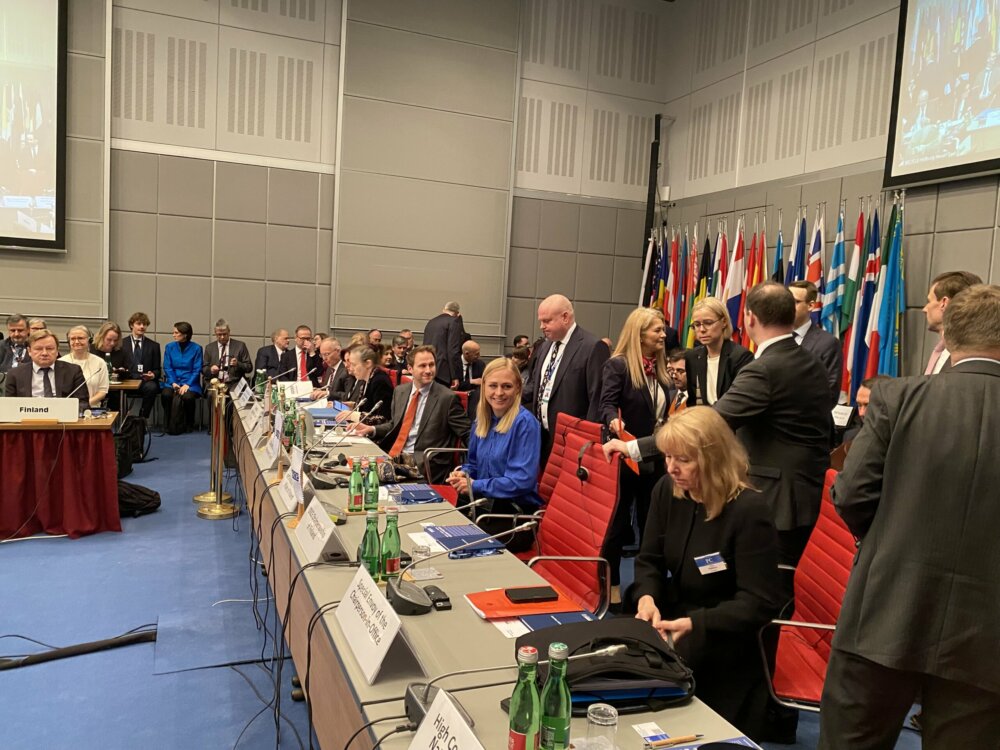The 20th OSCE Ministerial Council meeting in Kyiv: Addressing persistent dividing lines
On 5 and 6 December 2013, Ukraine hosted the 20th OSCE Ministerial Council (MC) meeting in Kyiv. The OSCE MC meets once a year in the country holding the Chairmanship and is the highest OSCE decision-making body. This year, the MC meeting was preceded by an OSCE Parallel Civil Society Conference, which was organized by the Civic Solidarity Platform in Kyiv, as well as by a panel discussion held by the newly established network of OSCE think tanks.
The MC meeting was held amid a political crisis in Ukraine which was sparked by the unexpected decision by the Ukrainian government on 21 November to suspend talks with the European Union (EU) on an Association Agreement and a deep free trade agreement, instead ordering to resume “an active dialogue”[1] with the Moscow-led customs union. Tensions increased further when on 30 November Ukrainian riot police violently dispersed peaceful protesters on Maidan Square in Kyiv, leaving the international community in a state of disappointment (see previous blog). Although Ukrainian president Yanukovych condemned “the actions that led to forceful confrontation and suffering of people”[2] and Ukrainian foreign minister Leonid Kozhara released a statement prior to the OSCE MC meeting announcing a “thorough investigation”[3] into the violent incidents, the damage had been done. Ukraine – in its capacity as OSCE Chairmanship-in-Office – had clearly breached core OSCE commitments of freedom of assembly and expression.
In response, US Secretary of State John Kerry decided not to attend the Kyiv OSCE MC and Britain and France sent deputies instead of foreign ministers. In addition, Catherine Ashton decided to prioritize on other meetings in Brussels and sent her Deputy Secretary General instead. The opening session of the OSCE MC meeting was dominated by statements from almost all participating States condemning the violent actions by the Ukrainian police and reminding Ukraine to uphold OSCE human dimension commitments. “All the principles and values on which this Organization was founded almost 40 years ago hang in the balance today between the Maidan and Bankova […]”, said Victoria Nuland, US Assistant Secretary of European and Eurasian Affairs. Even the OSCE Secretary General, who usually does not make any political statements, issued a critical press release in which he stressed the need to respect the freedom of assembly and the right to free expression. Several OSCE delegations also visited the protests on Maidan Square in a sign of solidarity.
The MC meeting was also characterized by persistent fault lines between Western OSCE participating States on the one hand and the Russian Federation (supported by a number of other CIS states) on the other hand. From approximately 2000/2001 onwards, the Russian Federation has been resentful towards NATO enlargement, the EU neighborhood policy and certain OSCE activities that it considers as encroaching on its ‘sphere of influence’. The dividing lines are exemplified in the current political crisis in Ukraine, which has turned into a geopolitical contest between the Russian Federation and the EU (see previous blog). The many OSCE initiatives from the 2009 ‘Corfu Process’ to the current ‘Helsinki+40 Process’ have so far not been successful in bringing the Russian Federation back on board and in reconciling views among participating States in general.
In this context, the Kyiv MC adopted a ‘Declaration on Furthering the Helsinki+40 Process’, which can be seen as the main political document of the meeting. In this declaration, participating States reconfirm their commitment to work together to create a security community “free of dividing lines, conflicts, spheres of influence and zones with different levels of security”. Because participating States could again not agree on attaching a concrete Plan of Action to the declaration, the foreign ministers of Ukraine, Switzerland and Serbia presented a detailed roadmap which highlights eight topics that will have to be reconciled by the OSCE community by the end of 2015, the year that marks the 40th anniversary of the Helsinki Final Act. It is too early to predict the outcome of this process. What can be said, however, is that all eight topics of discussion are interlinked and it is therefore likely that trade-offs will occur as participating States attach different levels of importance to the different sub-areas. Most crucial in this process will be rebuilding trust among participating States and bringing the Russian Federation back on board.
Similar to previous MC meetings, the Kyiv MC could not agree on a final political declaration due to fundamentally divergent views with regard to the protracted conflicts in the OSCE area. In fact, the dividing lines between East and West manifest themselves most strongly in the different views on the protracted conflicts. Since 2002, negotiations on the political declaration collapse every time because of the paragraphs dealing with the protracted conflicts. On the one hand, the conflict parties, including Georgia and Moldova (supported by the US and the EU), prefer strong and specific language on their respective conflicts, including references to Russian withdrawal from Georgia and Moldova (1999 Istanbul commitments) as well as language on “territorial integrity”. Russia, on the other hand, prefers to keep the language on the protracted conflicts very general.
In this context, it is a positive sign that ministers agreed on a general statement on the Transdniestrian Settlement Process in the 5+2 format and endorsed a statement by the Minsk Group Co-Chairs and the foreign ministers of Azerbaijan and Armenia. Both statements – although mainly of a declaratory character and deliberately not addressing the above mentioned contentious issues – give further political impetus to the respective negotiations during 2014.
Among the main achievements of the Kyiv MC was the adoption by the Permanent Council (PC) of an ‘Initial Set of OSCE Confidence-Building Measures to Reduce the Risks of Conflict Stemming from the Use of Information and Communication Technologies’. The MC endorsed this PC decision in a broader ‘Ministerial Declaration on Strengthening OSCE Efforts to Address Transnational Threats’. The set of information and communication technology (ICT) confidence-building measures is the first such decision by a regional organization and can therefore be considered as pioneering work by the OSCE. The decision comprises a comprehensive set of voluntary actions by participating States that should help to enhance interstate co-operation and transparency as well as “to reduce the risks of misperception, escalation, and conflict that may stem from the use of ICTs”.
Furthermore, there was sufficient common ground for participating States to adopt two decisions in the politico-military dimension. In addition to a decision on ‘Small Arms and Light Weapons and Stockpiles of Conventional Ammunition’, the MC endorsed the ‘Update of the OSCE Principles Governing Non-Proliferation’. In this latter document, participating States restate and update their common positions on non-proliferation and take note of the progress made since 1994. A decision on ‘Issues Relevant to the Forum for Security Cooperation’ could not be adopted for the second year in a row due to firmly entrenched positions concerning the “modernizing and updating” of the Vienna Document on Confidence- and Security-Building Measures (VD on CSBMs) (see previous blog). The Russian Federation opposes any strong language on this issue because it wants to keep as a strong bargaining chip the renegotiation of the Treaty on Conventional Armed Forces in Europe (CFE Treaty). In addition, the Russian Federation is conducting military reforms and is therefore not keen on increased military transparency. Western states, however, believe that the VD on CSBMs is an important tool for military transparency until a fully-fledged arms control regime (that includes the Russian Federation) can be re-established.
In the economic and environmental dimension, participating States adopted two decisions that can be considered important first steps but not major breakthroughs. The decision on ‘Improving the Environmental Footprint of Energy-Related Activities in the OSCE Region’ highlights the links between environmentally healthy energy production and security. Several states made their approval of the decision on ‘Protection of Energy Networks form Natural and Man-Made Disasters’ dependent on the exclusion of “nuclear energy installations or gas and oil infrastructure”, thereby significantly reducing the scope of this decision.
After the failure of the last two OSCE MC meetings to adopt decisions in the human dimension (see previous blog), it came as a great relief that the Kyiv MC broke this two year hiatus. Ministers adopted a decision on ‘Freedom of Thought, Conscience, Religion and Belief’ and another one on ‘Enhancing OSCE Efforts to Implement the Action Plan on Improving the Situation of Roma and Sinti’. However, one of the main missed opportunities of the Kyiv MC meeting was the breakdown of negotiations on a draft decision on protection of journalists. The Russian Federation could not join consensus on this decision because it disagreed with the US interpretation of the journalistic profession, which in the latter view includes online journalism and bloggers in addition to the traditional media professions.
Additional missed opportunities related to the inability of the OSCE MC to decide on the deployment of a field operation to Mongolia (see previous blog) and on officially welcoming Libya as an OSCE Mediterranean Partner for Cooperation (see previous blog). Both decisions would have raised the profile of the OSCE. Strengthening the OSCE’s presence in the Eurasian region would be to the benefit of both the OSCE and Mongolia. And including Libya as a Mediterranean Partner for Cooperation would have been a positive development, especially in light of the recent Arab Spring and the support the OSCE can offer to countries in transition.
In conclusion, the Kyiv OSCE MC meeting again highlighted the persistent dividing lines between East and West. The consecutive Swiss and Serbian Chairmanships will therefore have to provide the Helsinki+40 process with fresh impetus so that differences can be overcome and trust can be rebuilt. In the words of OSCE Chairperson-in-Office, Swiss Foreign Minister Didier Burkhalter, what is needed for this process to succeed are “game changers” and “high level political engagements”.
To view all documents related to the 2013 OSCE Ministerial Council meeting in Kyiv, click here.
To view the address by Didier Burkhalter, OSCE Chairperson-in-Office and Swiss Foreign Minister at the Special Meeting of the Permanent Council on 16 January 2014, click here.
[1] Press release by the Department of Information and Communication of the Secretariat of the Cabinet of Ministers of Ukraine (CMU), Government adopted resolution on suspension of preparation process to conclude Association Agreement with EU, Kyiv, 21 November 2013. Retrieved 3 January 2013, http://www.kmu.gov.ua/control/en/publish/article?art_id=246866213&cat_id=244314975
[2] Press Office of President Viktor Yanukovych, President’s address to Ukrainian people, 30 November 2013. Retrieved 4 January 2014, http://www.president.gov.ua/en/news/29634.html
[3] OSCE Press Release, Statement by the OSCE Chairperson-in-Office, Minister of Foreign Affairs of Ukraine Leonid Kozhara, Kyiv, 4 December 2013. Retrieved 4 January 2013, http://www.osce.org/cio/109200



Comments
* Your email address will not be published